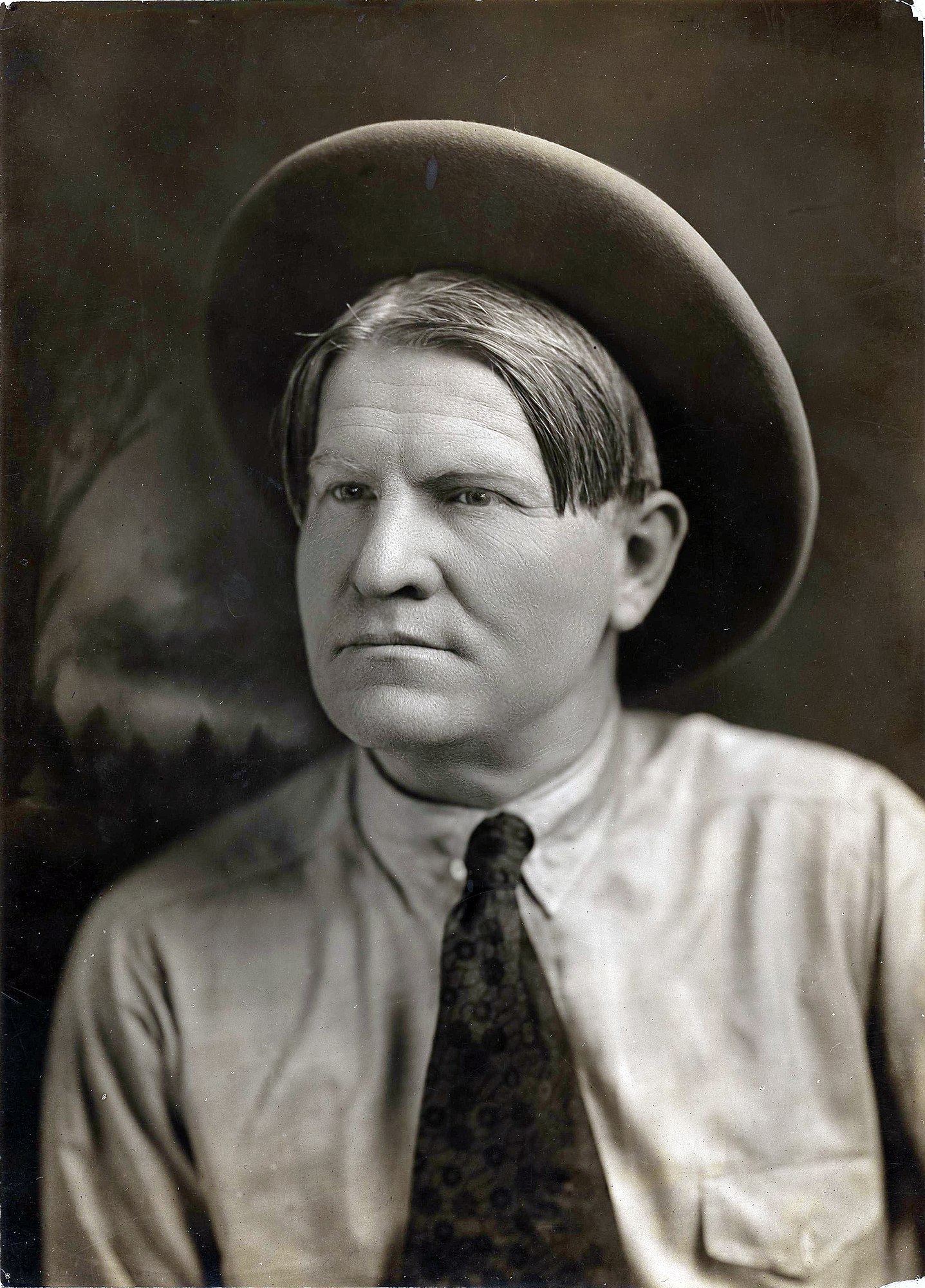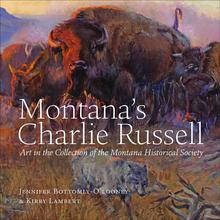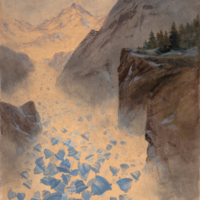More about Charles Marion Russell
- All
- Info
- Shop
Works by Charles Marion Russell

Contributor
Charles Marion Russell was born in St. Louis, Missouri, to a family with a fur-trading background on his mother’s side and a wealthy coal-mining entrepreneurial father.
His early life cleaves close to a stereotypical narrative of the rebellious youth with cowboy ambitions: he dropped out of military school after one term (after bribing classmates with art to do his work for him) and then started sheep-ranching in Montana at the age of sixteen. Although his family hoped he would regret his decision, he ended up staying in the area for two years with a trapper he met in the woods (yes, really), and with only short, occasional visits home, began working as a cattle rancher. At the time, Russell had no plans of being a professional artist, but did take night shifts so that he could take advantage of daylight to draw and paint the surrounding landscape and scenes from daily cowboy life. He gave away works to friends and family in lieu of writing full letters, or would use his art to pay frontier brothel workers for their services.
Russell’s first break into the limelight came after the particularly long and cold winter of 1886-87. In order to represent the freezing temperatures that killed huge swaths of cattle, he produced a watercolor sketch of a starving cow in the snow to be sent back East in reply to a letter. The image was so evocative of the painful season that thousands of copies were passed around in awe, and led to Russell’s first official commissions.
Immediately after this first brush with fame, the artist spent six months living with a group of Káínáwa people in Alberta, and the connections he formed there likely led to his tendency to treat indigenous Americans relatively respectfully for the time in his artwork and daily life. By 1893, Russell was receiving enough high-paying commissions for his cowboy art that he could stop cattle-ranching. He married a woman named Nancy Cooper in 1896. At the time, he was 32 and she was 18, which definitely raises some questions about motivations and power differentials in the relationship.
Despite the age gap, Nancy quickly fell into the role of Russell’s financial advisor, pushing him to visit New York regularly and attempt to sell his paintings—she wanted to be able to finance her dream of having a house in California. Although he had to compete with Frederick Remington, another “cowboy artist,” by the 1910s Russell was considerably successful, with his art appearing in places as tacky as mass-produced calendars and as momentous as the Montana House of Representatives. During this time he also created bronze-cast sculptural works and semi-autobiographical writing, although by most accounts his writing was subpar compared to his visual art.
Russell died of a heart attack on October 24, 1926. His work is still popular, reflecting many Americans’ romanticization of and nostalgia for the “Wild West” era of U.S. history.
Sources
- Russell, Austin. Charles M. Russell, Cowboy Artist: A Biography. New York: Twayne Publishers, 1957. http://www.archive.org/stream/cmrcharlesmrusse010044mbp/cmrcharlesmruss…
- Gale, Robert L. Charles Marion Russell. Boise: Boise State College, 1927. http://digital.boisestate.edu/cdm/ref/collection/western/id/30
Featured Content
Here is what Wikipedia says about Charles Marion Russell
Charles Marion Russell (March 19, 1864 – October 24, 1926), also known as C. M. Russell, Charlie Russell, and "Kid" Russell, was an American artist of the American Old West. He created more than 2,000 paintings of cowboys, Native Americans, and landscapes set in the western United States and in Alberta, Canada, in addition to bronze sculptures. He is known as "the cowboy artist" and was also a storyteller and author. He became an advocate for Native Americans in the west, supporting the bid by landless Chippewa to have a reservation established for them in Montana. In 1916, Congress passed legislation to create the Rocky Boy Reservation.
The C. M. Russell Museum Complex in Great Falls, Montana houses more than 2,000 Russell artworks, personal objects, and artifacts. Other major collections are held at the Montana Historical Society in Helena, Montana, the Buffalo Bill Center of the West in Cody, Wyoming, the Amon Carter Museum of American Art in Fort Worth, Texas, and the Sid Richardson Museum in Fort Worth. His 1912 mural Lewis and Clark Meeting Indians at Ross' Hole hangs in the House chambers of the Montana Capitol in Helena, and his 1918 painting Piegans sold for $5.6 million at a 2005 auction. In 1955, he was inducted into the Hall of Great Westerners of the National Cowboy & Western Heritage Museum in Oklahoma City, Oklahoma.
Check out the full Wikipedia article about Charles Marion Russell












